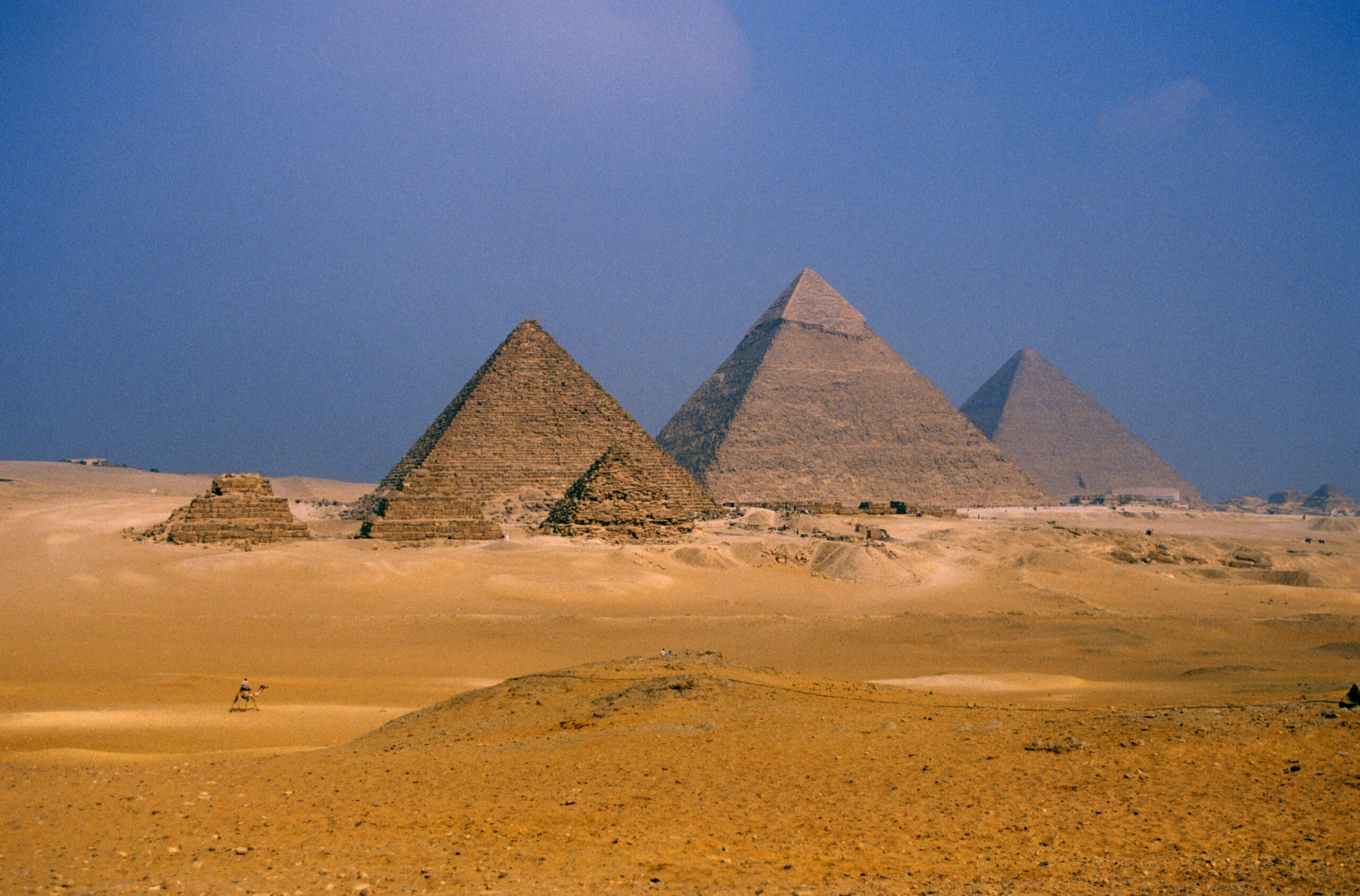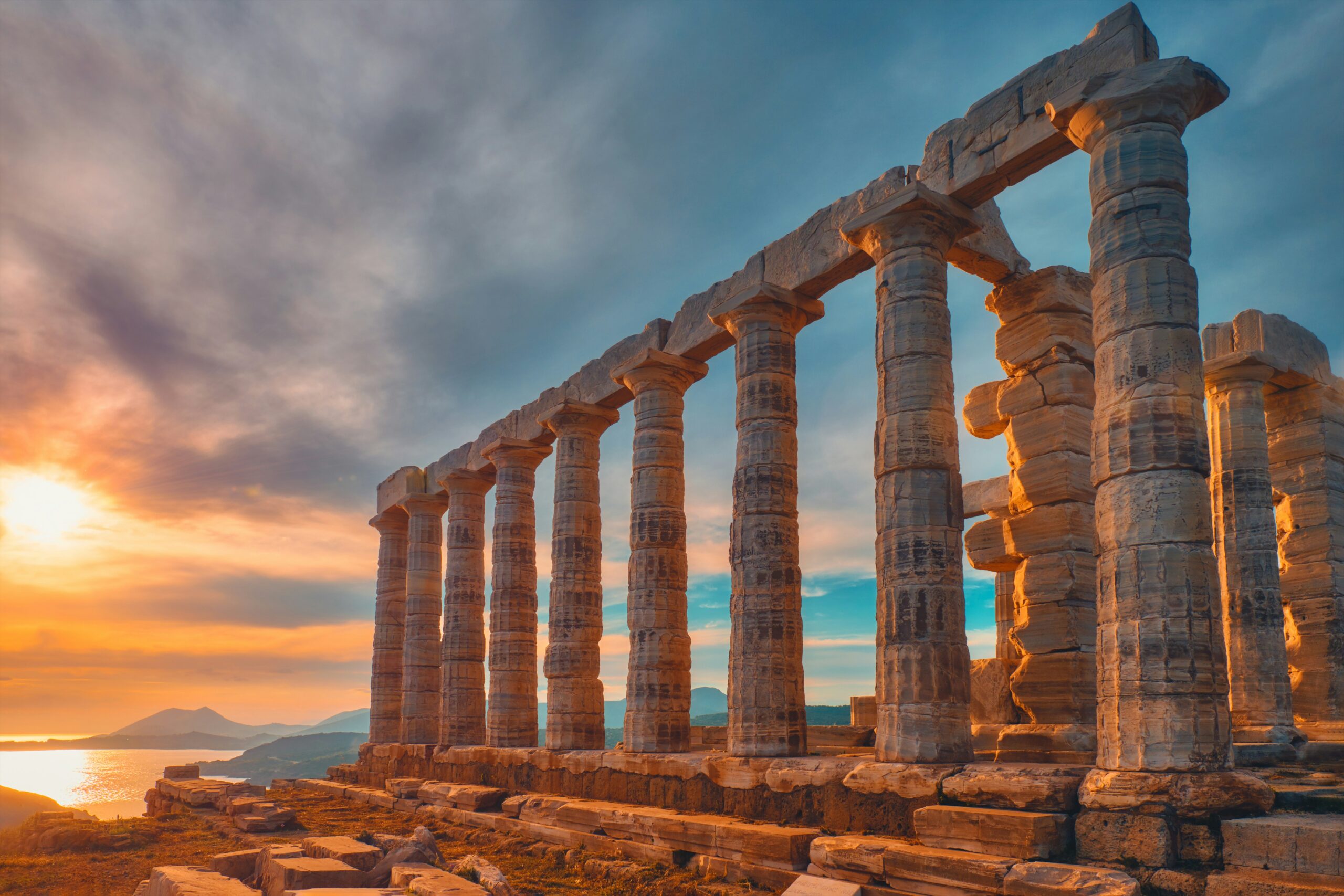The History of the Great Pyramids
Why Were the Pyramids Built?
The Great Pyramids of Egypt weren’t merely decorative structures—they were tombs for the pharaohs, designed to ensure their safe passage into the afterlife. Ancient Egyptians believed in preserving the soul after death, and the pyramids symbolized a connection between the human and divine.
The most famous pyramid, the Great Pyramid at Giza, was built for Pharaoh Khufu around 4,500 years ago during Egypt’s Fourth Dynasty. It remains the largest of all pyramids and one of the Seven Wonders of the Ancient World.
Other notable pyramids include:
- The Pyramid of Khafre (Khufu’s son), which appears taller due to its elevated base.
- The Pyramid of Menkaure, the smallest of the Giza complex but equally iconic.
How Were the Pyramids Built?
Constructing the pyramids was an incredible feat of engineering and manpower. Researchers estimate that the Great Pyramid required over 2 million stone blocks, some weighing up to 80 tons. But how could these blocks be moved and arranged with such precision?
Some intriguing techniques include:
- Ramps: Archaeologists believe that inclined ramps allowed workers to drag or roll stones to higher levels.
- Copper Tools: These were used to cut limestone and shape granite blocks.
- Levers and counterweights: Allowed precise placements of heavy stones.
While some argue about the specifics of these methods, modern discoveries—like remnants of sledges and tools—continue to validate these theories.
Architectural Marvels
Masterful Geometry
The Great Pyramid of Giza is a testament to mathematical precision. Its original height was 146.6 meters (now reduced to 138.5 meters due to erosion), and each base side measures approximately 230 meters. Remarkably, the pyramid is nearly perfectly aligned with the cardinal points (north, south, east, and west).
This geometric accuracy still puzzles modern architects. Was it advanced surveying? Knowledge of astronomy? These mysteries keep the fascination alive.
Interior Design
The pyramids were not just impressive from the outside. Inside, intricate passageways and chambers reveal the complexity of their design.
Key features include:
- The King’s Chamber: an exquisitely built final resting place for the pharaoh.
- Air shafts: believed to serve symbolic purposes, directing the soul toward the heavens.
- The Grand Gallery: a marvel in itself, with its high ceilings and precise stonework.
Table of Notable Pyramid Features
| Feature | Description | Modern Comparison |
|---|---|---|
| Original Height | 146.6 meters | Tall as a 40-story building |
| Base Alignment | Nearly perfect to the cardinal points | NavSat accuracy |
| Number of Stone Blocks | Over 2 million | Equivalent to stacking bricks |
| Largest Block Weight | ~80 tons | Approx. weight of 10 elephants |
| Great Pyramid Age | ~4,500 years | Twice as old as the Colosseum |
| King’s Chamber Material | Granite from Aswan (transported 800 km) | Architectural durability |
| Interior Passageways | Lengthy corridors & symbolic air shafts | Unique design feature |
| Architectural Alignment | Aligned with stars like Orion’s Belt (connecting it to mythology & science) | Historical astronomy |
Visiting the Great Pyramids
1. Best Time to Visit
Visit between November and February for cooler weather. Avoid the midday heat by arriving when the site opens (typically 8 AM).
2. Hire a Knowledgeable Guide
A guide can provide fascinating insights into the history and hidden stories of the pyramids, which you might otherwise miss.
3. Plan for the Full Giza Plateau
Explore more than just the pyramids. Don’t miss the Sphinx, nearby tombs, and the Solar Boat Museum.
4. Dress Comfortably
Wear breathable clothing, comfortable shoes, and sunscreen. Treasure hunting (or just walking) under the Egyptian sun can get intense!
5. Respect Local Rules
Climbing the pyramids is strictly prohibited for safety and preservation reasons. Also, always politely decline unauthorized offers from vendors.
FAQ Section
Q1. Can I go inside the Great Pyramids?
Yes! Visitors can enter the Great Pyramid and other pyramids on the Giza Plateau. Keep in mind that entry usually requires an additional ticket, and the spaces inside can be narrow and humid.
Q2. How much does it cost to visit the pyramids?
General admission to the Giza Plateau typically costs around $10–15 (USD). Access to the interior of specific pyramids may involve additional fees.
Q3. How long does it take to explore the pyramids?
Plan for at least half a day to explore the Great Pyramids, the Sphinx, and surrounding attractions.
Q4. How safe is it to visit the pyramids?
Tourism around the Giza Plateau is generally safe, though it’s wise to use official guides and adhere to local travel advisories.
Why the Great Pyramids Continue to Inspire
The Great Pyramids stand as a testament to human creativity, ambition, and persistence. They remind us of what can be achieved with vision and determination—principles that resonate even in modern architecture and personal pursuits.
By exploring their history, studying their construction, and experiencing their grandeur firsthand, we honor the advanced culture that built them and keep their legacy alive.
Whether you’re an archaeology enthusiast, a history lover, or simply curious about ancient wonders, the Great Pyramids of Egypt are a bucket-list destination you won’t forget. ✨




Leave a Reply